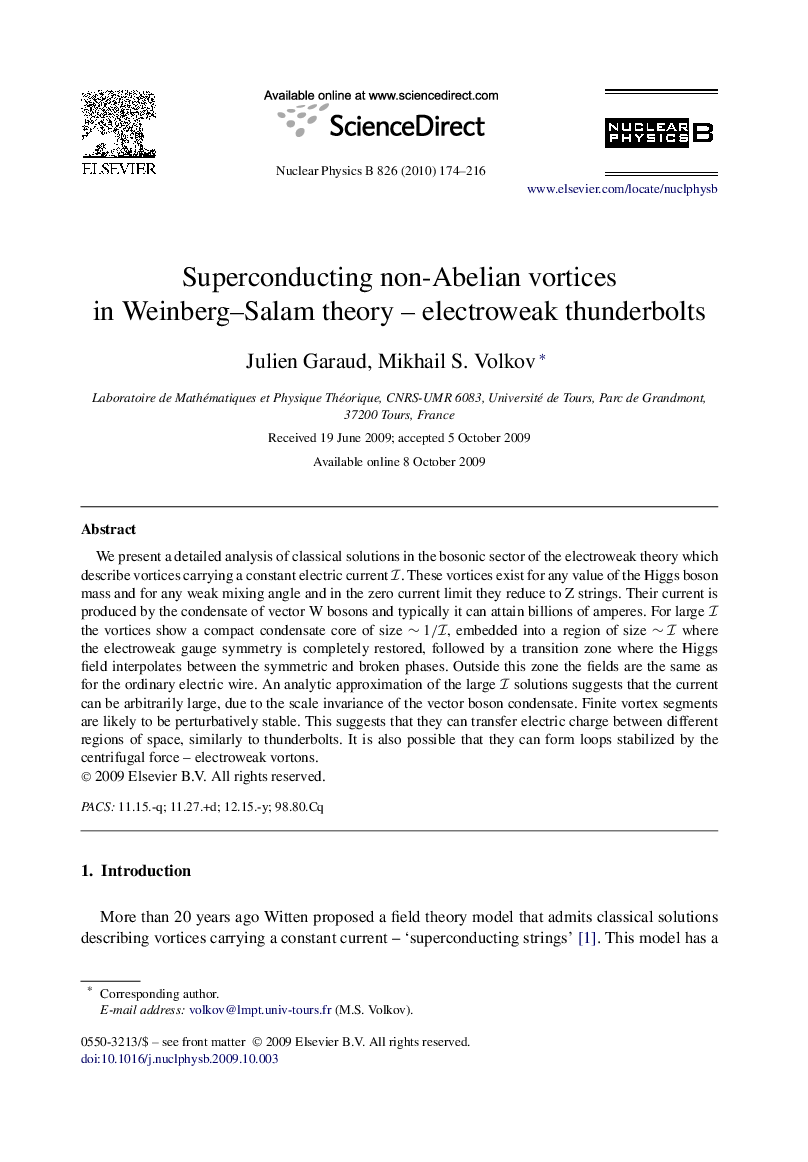| Article ID | Journal | Published Year | Pages | File Type |
|---|---|---|---|---|
| 1841574 | Nuclear Physics B | 2010 | 43 Pages |
We present a detailed analysis of classical solutions in the bosonic sector of the electroweak theory which describe vortices carrying a constant electric current II. These vortices exist for any value of the Higgs boson mass and for any weak mixing angle and in the zero current limit they reduce to Z strings. Their current is produced by the condensate of vector W bosons and typically it can attain billions of amperes. For large II the vortices show a compact condensate core of size ∼1/I∼1/I, embedded into a region of size ∼I∼I where the electroweak gauge symmetry is completely restored, followed by a transition zone where the Higgs field interpolates between the symmetric and broken phases. Outside this zone the fields are the same as for the ordinary electric wire. An analytic approximation of the large II solutions suggests that the current can be arbitrarily large, due to the scale invariance of the vector boson condensate. Finite vortex segments are likely to be perturbatively stable. This suggests that they can transfer electric charge between different regions of space, similarly to thunderbolts. It is also possible that they can form loops stabilized by the centrifugal force – electroweak vortons.
